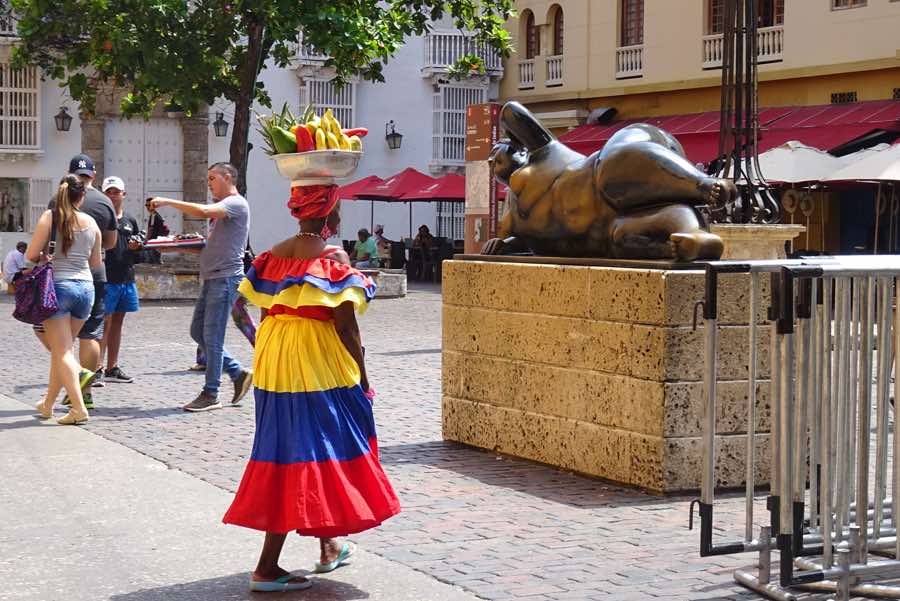The coffee area called “Eje Cafetero” is located in the central west of Colombia and mainly includes the departments of Caldas, Risaralda and Quindío. Before dedicating itself to the production of one of the best coffees in the world, this region was a center of rubber production until the beginning of the 20th century.
Since 2011, part of the Eje Cafetero has been classified by UNESCO under the name of Colombian Coffee Cultural Landscape. This designation shows the importance of the region in the Colombian economy and also recognizes the beauty of its landscape.
Salento, colourful village
Salento, in the Quindío department, is often the gateway to the Eje Cafetero. Small village typical of the region, Salento has kept its paisa charm (denomination which designates the inhabitants of this region) which enchants visitors so much.
Its colourful colonial houses catch the eye and delight amateur photographers. The centre of the village is full of small restaurants or small stalls and of course coffee shops where for a small fee you will have the pleasure of tasting excellent coffee while learning a little more about its terroir of production. Coffee shops even make a point of promoting every small producer.
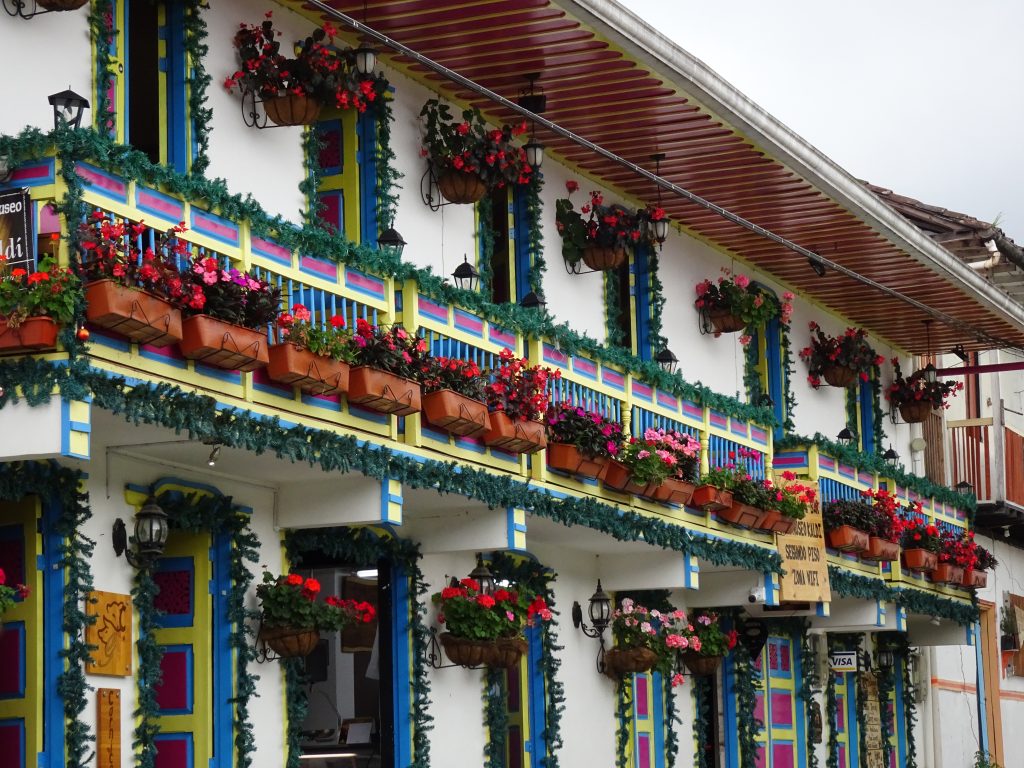
Even if Salento and its surroundings are very tourist regions, especially on weekends when the pedestrian street is bubbling with foreigners, do not turn away from this small town that will charm you as it has charmed me.
Hike in the Cocora Valley
If you want to visit the surroundings of Salento, go to the village square and climb into a Willys Jeep. After 30 minutes of glued-tight road or balanced on the edge of the trunk, you will arrive at the entrance of the Cocora Valley.
The palm trees of the Cocora Valley are the highest in the world, they can reach 60m and live more than 100 years. The palm trees being spaced several meters apart, we have all the pleasure of admiring their majesty accentuated by the clouds which like to cling to their leaves.
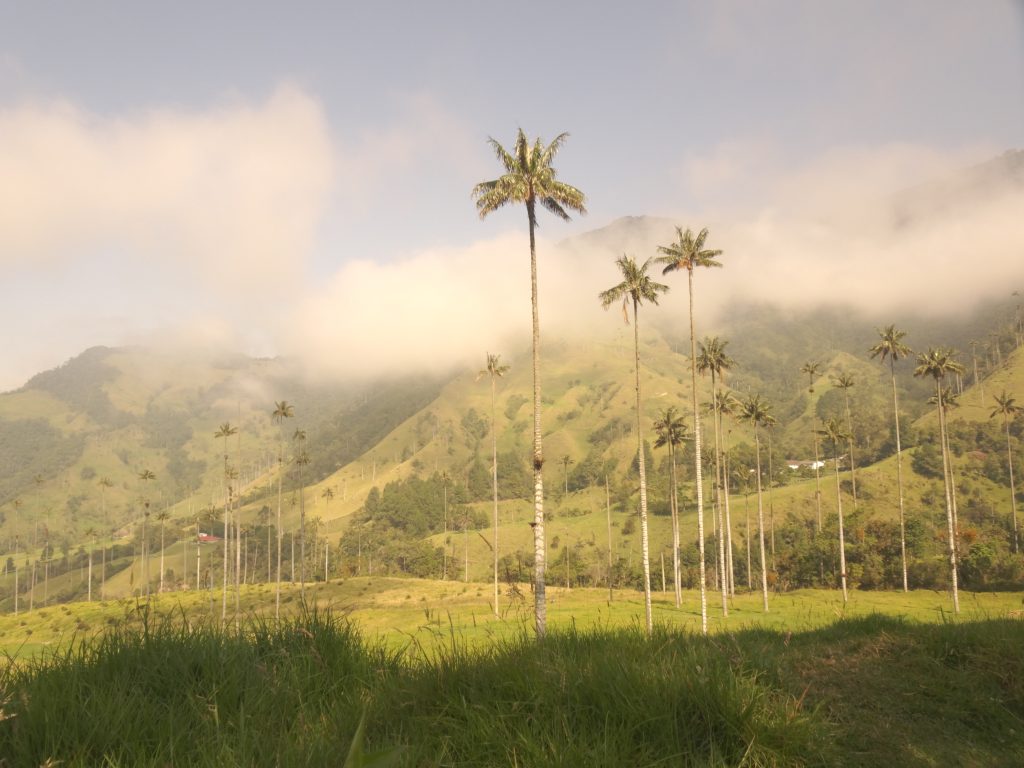
Once there, you will have the opportunity to do several hikes:
- A small two-hour loop that gives you a magnificent overview of the Valley and its famous wax palm trees.
- You can also make a longer and more physical loop (around 5h) which will lead you to the Acaime pass at almost 3000m above sea level, a privileged point to admire the hummingbirds and their enchanting flight.
It is a magnificent spectacle, one of the landscapes that I preferred in Colombia, and it is not for nothing that this place has become the international postcard of Colombia.
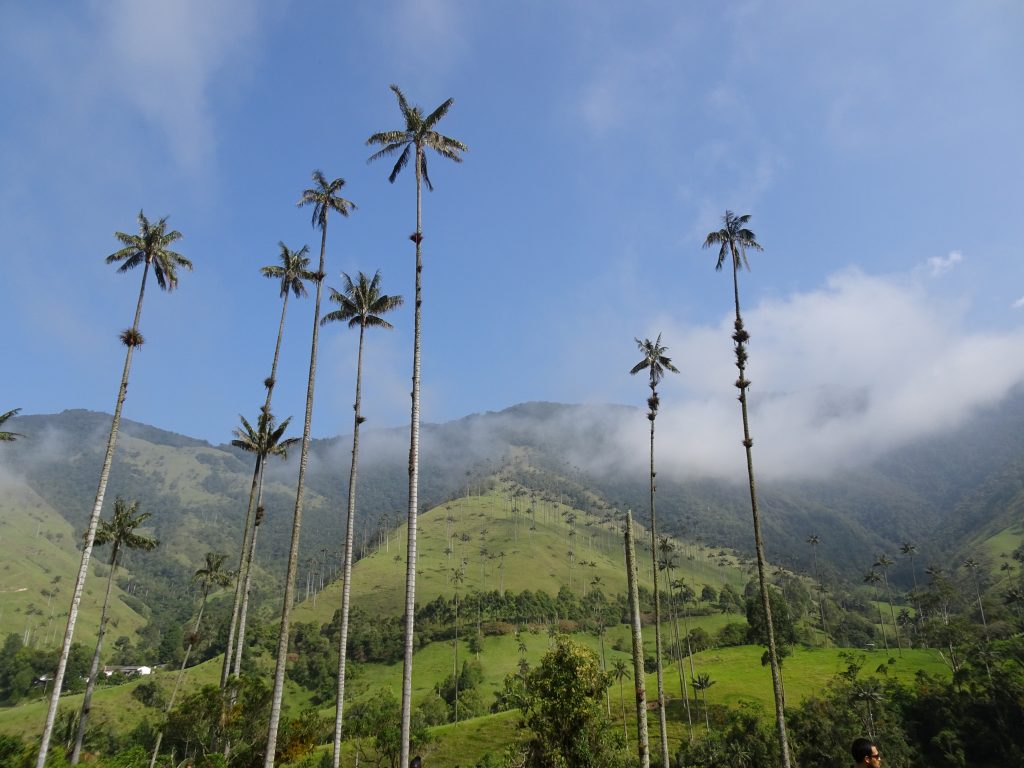
Play a game of Tejo
Back in Salento, take advantage of the late afternoon to play a game of tejo, a very playful traditional sport. The idea is simple: throw a metal disc called “tejo” as close as possible to a small metal hoop (“bocín”) where there are firecrackers (“mechas”) all placed on wet earth. Depending on where you fall you gain so many points. Your tejo detonates a firecracker and ends up in the hoop and you earn maximum points. The first to gain 21 points wins. The owners of “canchas de tejo” (tejo grounds) have adapted their dimensions so that this national sport is more accessible to tourists.
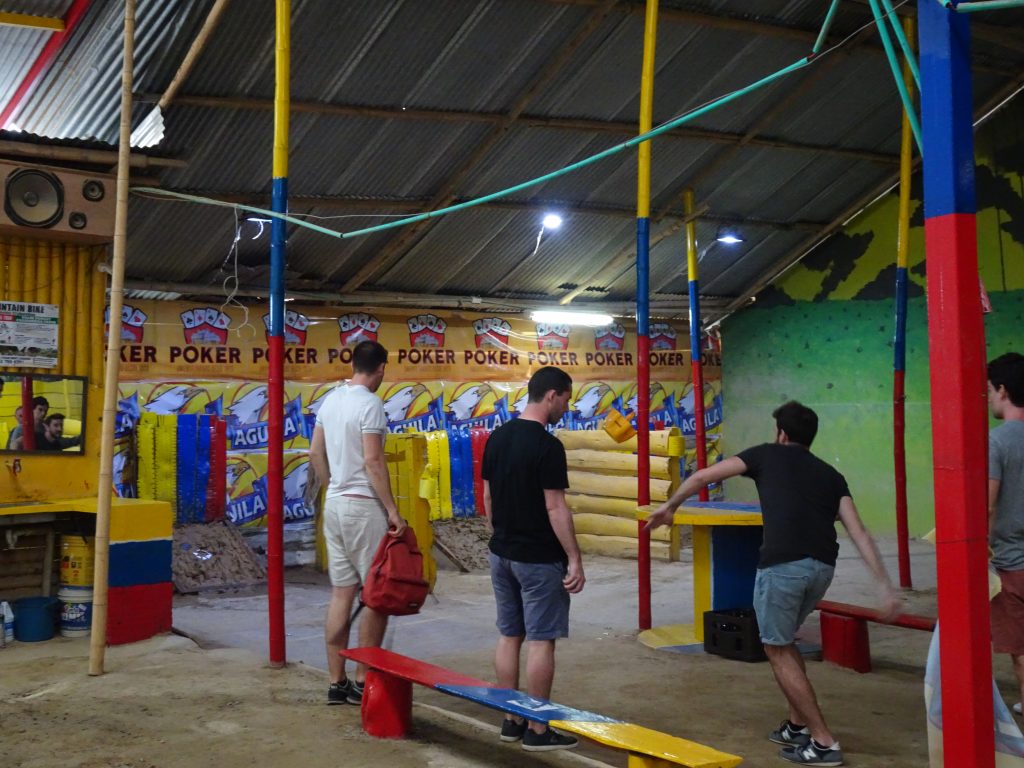
Discover a unique tradition: the confection of bejuco baskets
You continue to Filandia, 30 minutes from Salento, at the Centre of Interpretation of Bejuco Baskets to discover this traditional craft.
There you will be greeted by Wilmar who will show you around the very well-organized small museum which presents the baskets according to their use during coffee production. This craft has existed for about 100 years and is therefore now the sixth generation which is trying to continue making the baskets of natural fibres called “bejuco”.
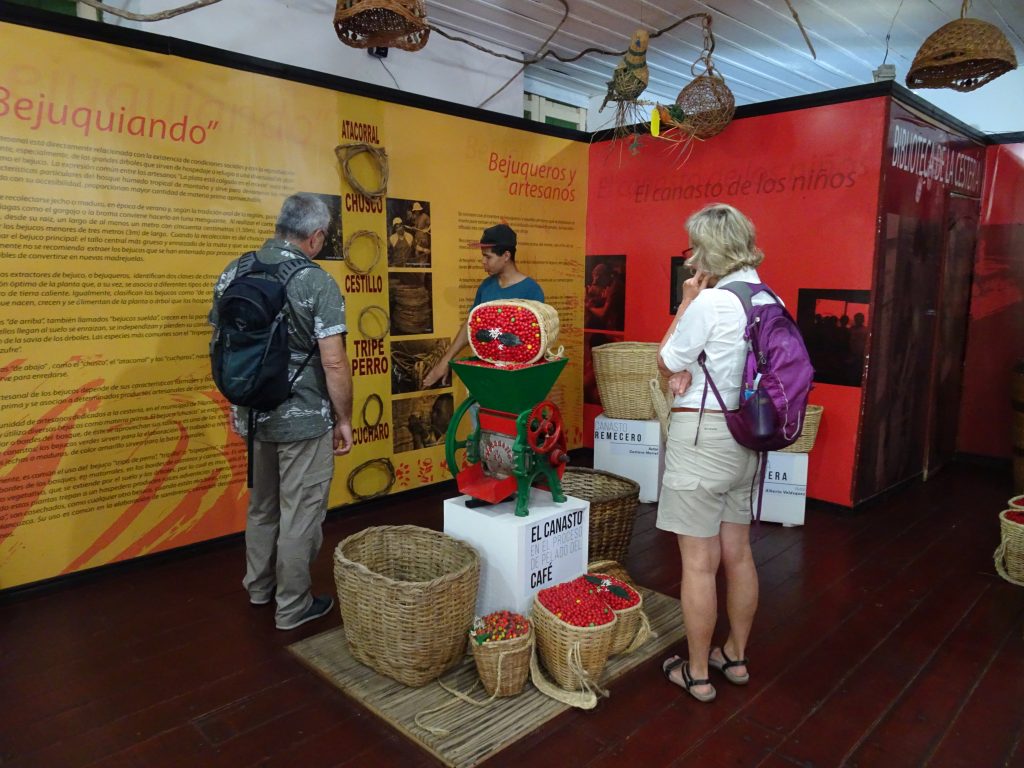
The Centre offers 3 types of tours:
- Just a visit to the museum and a small demonstration of basket making (duration: 1 hour)
- The visit and then the opportunity to make yourself a small basket (duration: 2 hours)
- An outing in the forest to see the bejuco plant, visit the museum and make a basket (duration: 4h)
There are still 30 artisans in Filandia who are trying to continue this unique tradition.
La Giralda, finca in the Eje Cafetero region
After admiring beautiful landscapes, spend a few days at La Giralda in the village of Cuchilla del Salado, a small coffee farm near Manizales, and learn all about the production of Colombian black gold: coffee.
Duvier and Carmenza have always worked in coffee. They started as harvesters, then bought the “finca” in which they worked. Now and for 2 years already, they are happy and proud to introduce tourists to the coffee production process.
What strikes you from the first glance around is the harshness of the landscape: magnificent but so hostile for agricultural production. Indeed, coffee trees are planted on extremely steep slopes which make the uninitiated dizzy. Between the inclination of the slopes, the loads and the schedules, the production of coffee, entirely manual of course, is a real test of strength.
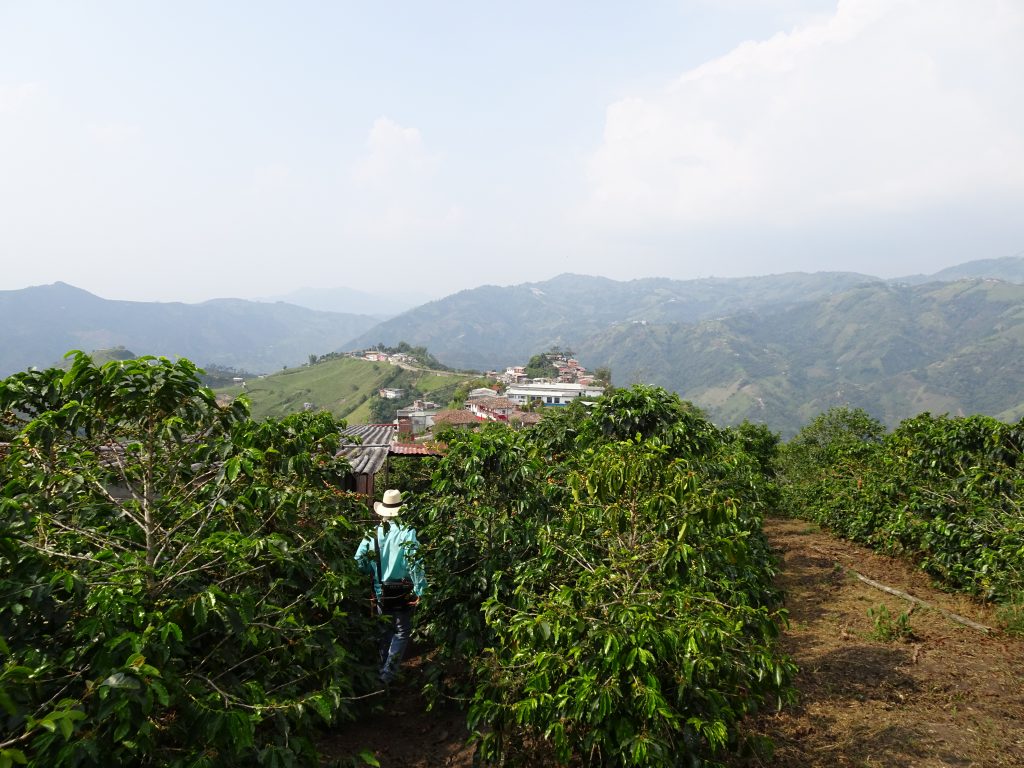
You will start your tour of the finca with the very beginning of any production: the coffee bean. Before being able to taste a first cup of coffee, a plant takes 3 years to produce. It is still necessary to wait another 3 years before reaching the maximum yield. Before production declines, a “soca” is made. The foot is then cut 30 cm from the ground to allow the shrub to give again. The coffee tree will experience two “socas” and will be definitively cut after 18 years.
After this explanation, you will stroll through the coffee trees and Duvier will show you how to harvest a cherry without damaging the plant so that it gives again. Duvier and Carmenza produce their own plants of the “Castilla Naranjal” variety. Coffee trees produce all year round, but there are two major harvest periods: June and July, then November, December and January. The finca produces an original coffee, that is to say without adding chemical fertilizers. Best harvesters can pick up between 500 and 600 kg per day and they are paid per kilo picked up (500 Colombian pesos or around € 0.10 per kilo).
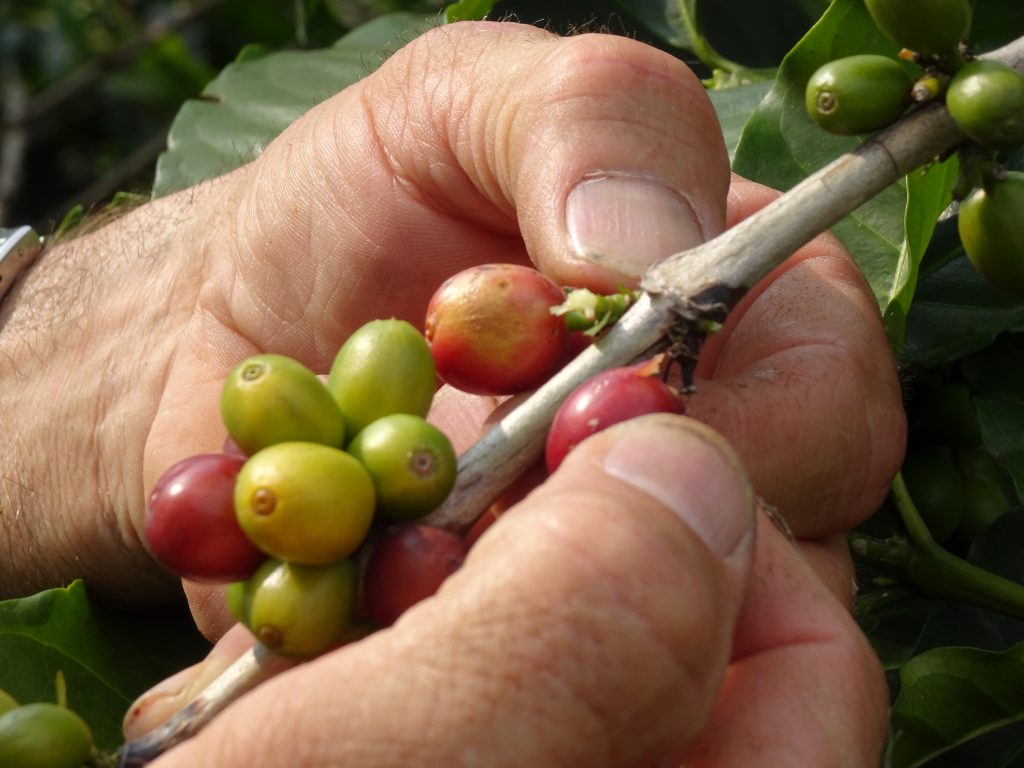
The steps following the harvest can either be manual or more industrial:
- The manual method : pulping is done with the strength of the arm thanks to an ancestral machine, then it takes 15 hours of fermentation and 15 days of drying in the sun before being able to send the grains to the cooperative of Manizales which will buy the at the stock market price of the day.
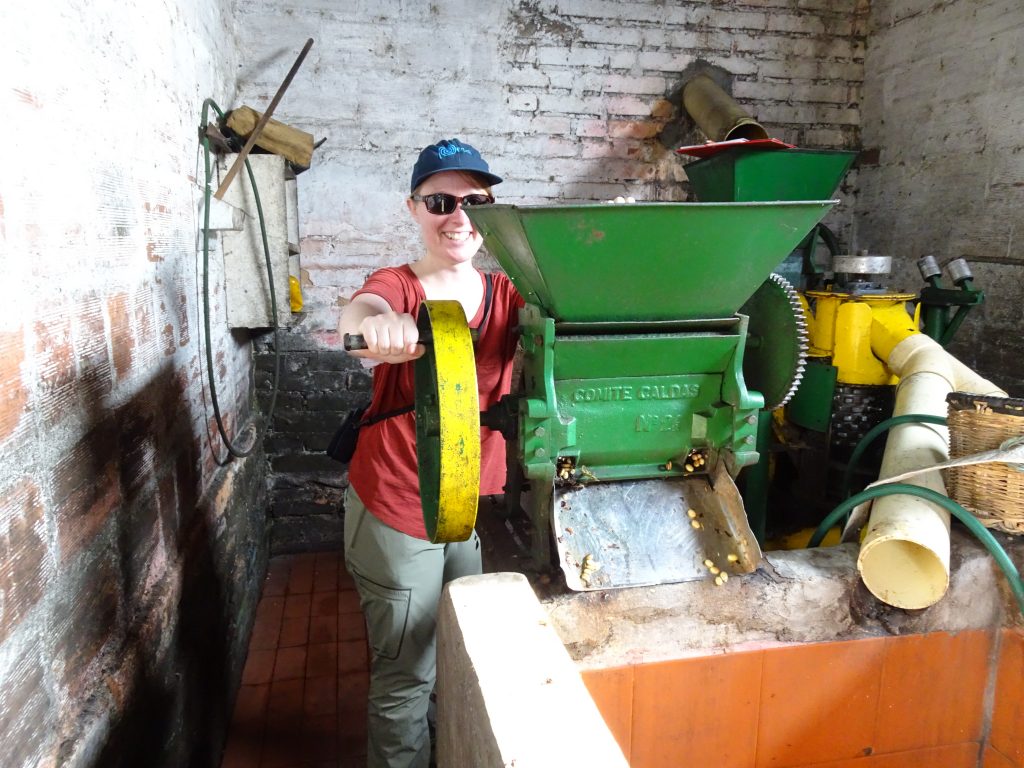
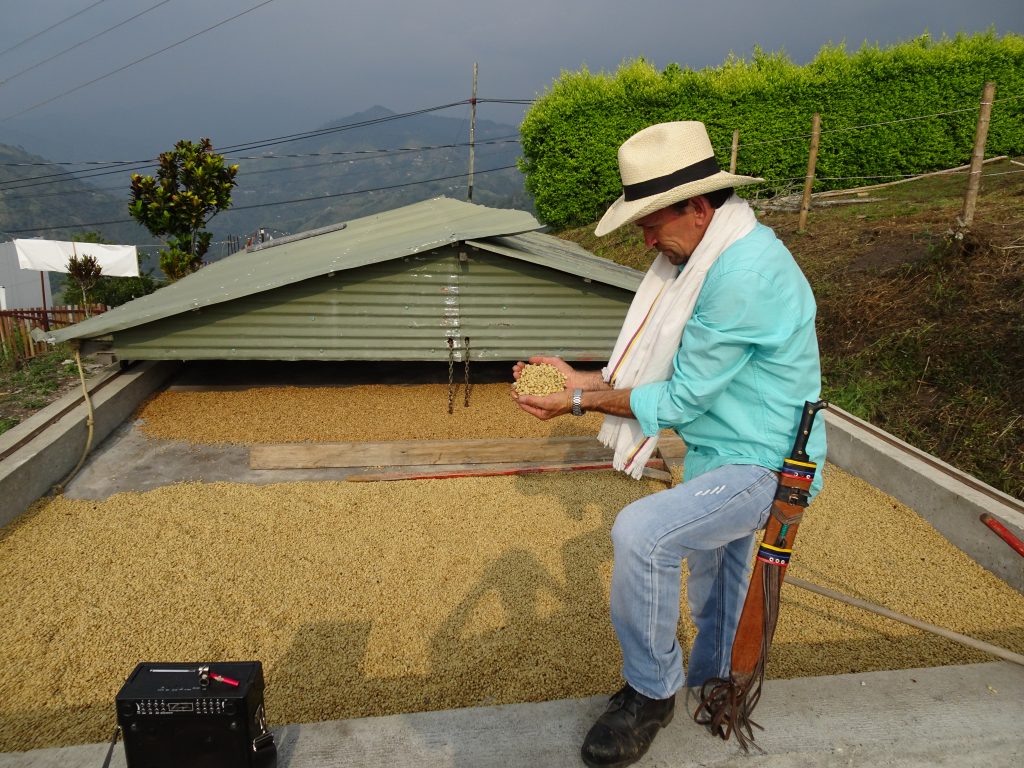
- For the industrial method, pulping is done using a machine called “desmusilajinadora” which removes the pulp and honey (liquid that surrounds the grain) at the speed of 600kg in 1h. With this process, there is no need for fermentation and drying is carried out in silos.
Duvier and Carmenza prefer the traditional method which is certainly more demanding but which gives a coffee with better taste qualities.
To finish this beautiful afternoon, you will learn to roast coffee, to grind it and you will have the pleasure of enjoying a cup.
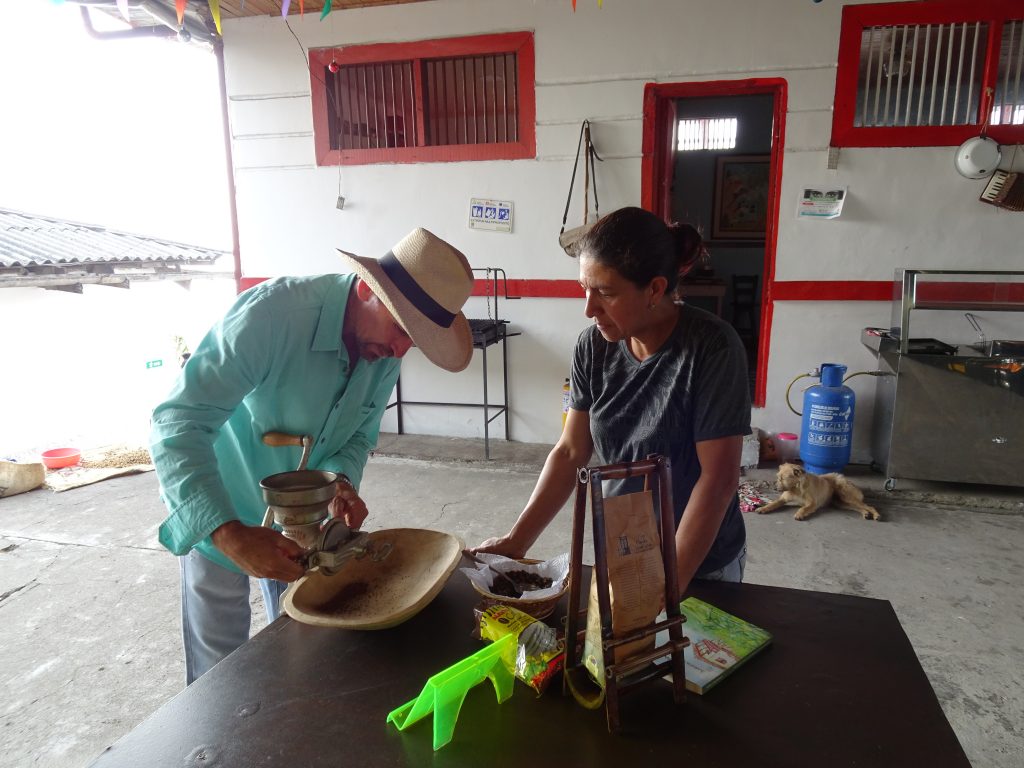
If the afternoon is not too late yet, Duvier and Carmenza will take you on a tour of Cuchilla del Salado, a typical small village built on the crest of a mountain by settlers from the Antioquia region.
In the evening, Carmenza will teach you how to make a typical dish of the region and you will end this day by playing a game of domino with the whole family.
Duvier and Carmenza are adorable and attentive hosts. Your stay will undoubtedly be as extraordinary as mine: fully immersed in the paisa lifestyle to the rhythm of the parrandera music.
It is a truly unforgettable experience for coffee lovers and even others because it is the unique opportunity to taste an exceptional coffee produced with passion.
Your stay in the Eje Cafetero will completely fill you. You will be charmed by the beauty of the landscapes and by the kindness of its inhabitants.




